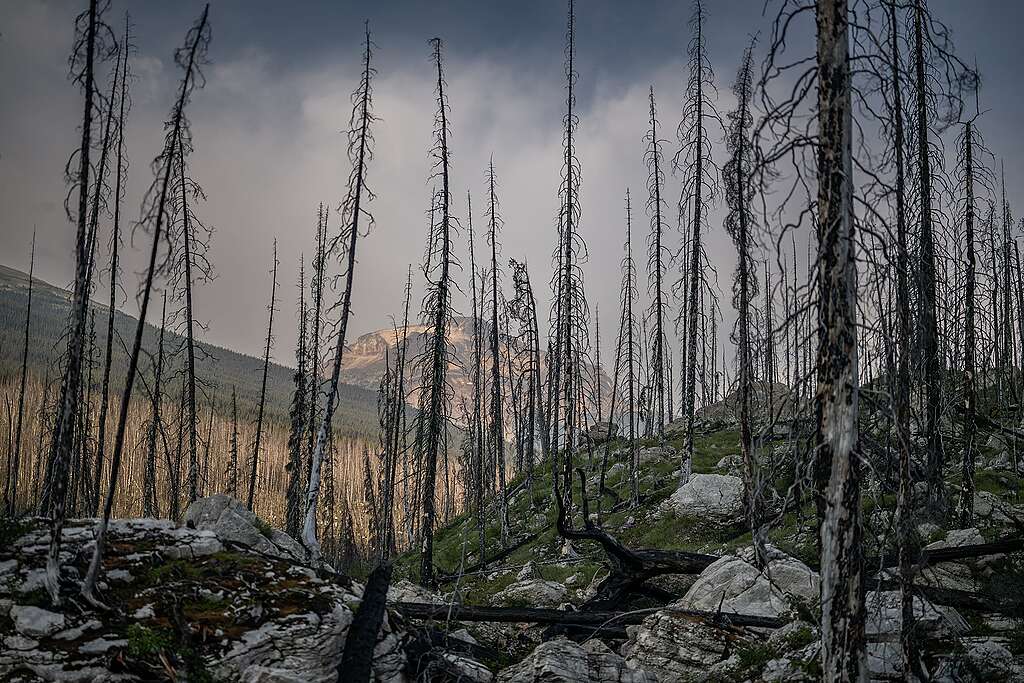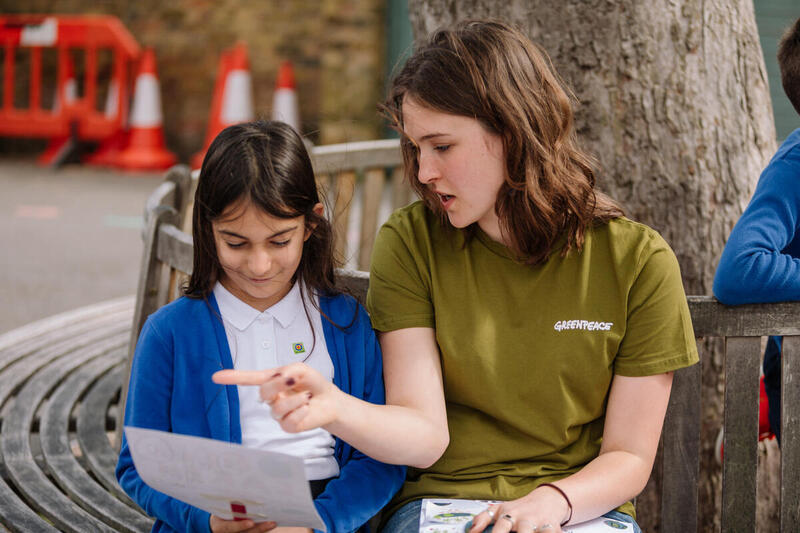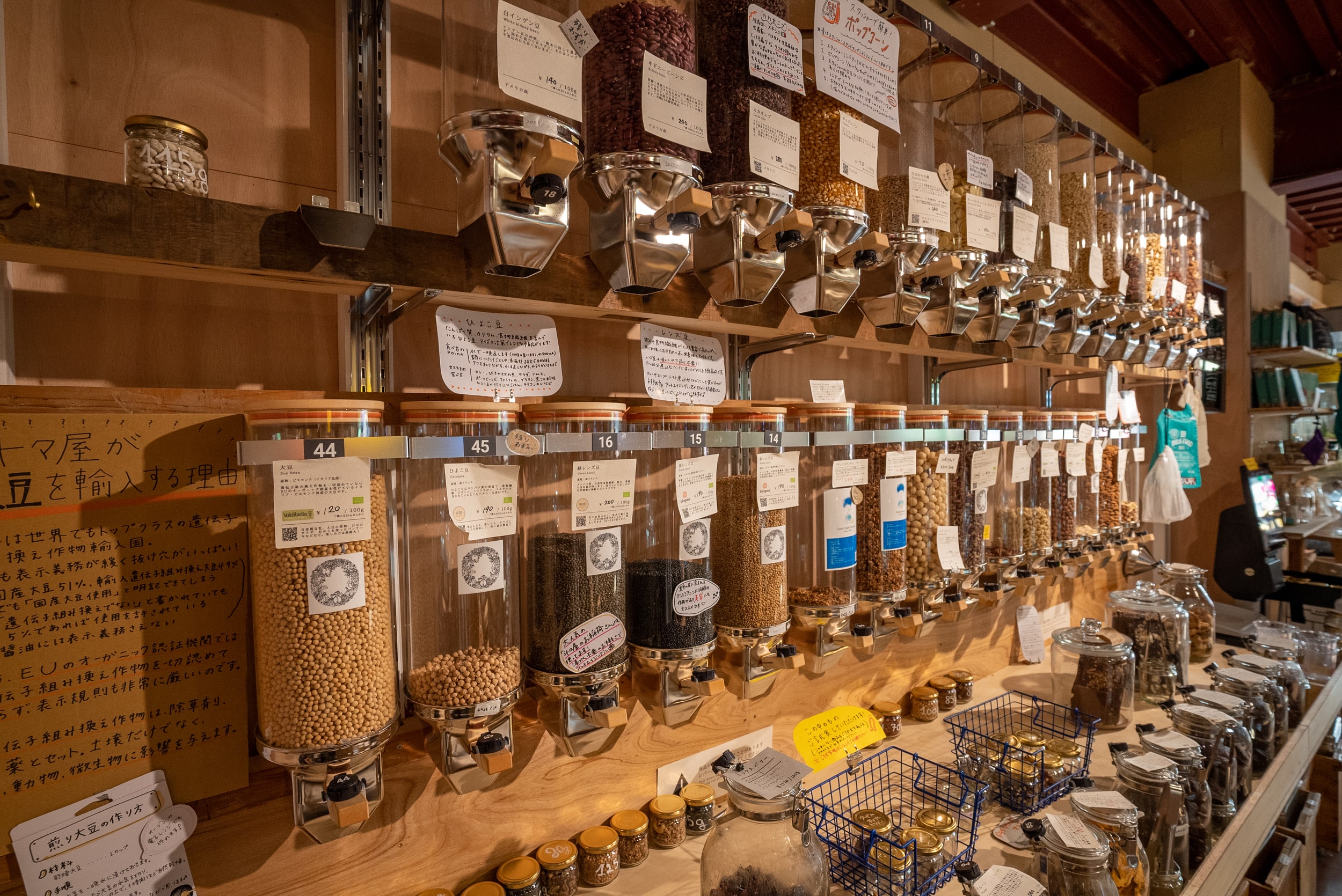We’ve got some superheroes on our side when it comes to climate change.
Fossil fuels release carbon dioxide when we burn them for energy. This carbon pollution heats up our atmosphere and causes the climate to change. Luckily for us, the land and oceans absorb around half of this pollution. They take it out of the atmosphere and protect the planet from getting even warmer.
Four ecosystems in particular are carbon-storage superheroes! They can help us slow climate change and adjust to its impacts. But it’s up to us to keep them healthy.

1. Oceans
Healthy oceans are dynamos at removing carbon dioxide from the air. Phytoplankton are one of the main reasons.
These microscopic organisms take in carbon dioxide during photosynthesis. Small animals eat the phytoplankton, and larger animals eat those animals. The carbon moves through the food chain until an animal dies and sinks to the bottom of the ocean.
Phytoplankton gobble up billions of tonnes of carbon dioxide each year, as much carbon as all the plants and trees on land combined.
Locking up carbon isn’t the only way that oceans help us cool an overheating planet. They also absorb more than 90% of the heat from climate change!
2. Forests
Forests are another carbon champion, absorbing about one third of our carbon dioxide pollution.
As trees grow, they take carbon dioxide from the atmosphere during photosynthesis. They store the carbon in their trunks, branches, roots, and leaves and the soil around them.
Thankfully, the Earth has many forests! They still cover around 30% of the planet, and Canada has the largest intact forest left in the world. The Canadian boreal forest starts just below the Arctic Circle. It stretches from Newfoundland and Labrador on the Atlantic Coast to northeastern British Columbia and the Yukon Territory. It has some very valuable old-growth trees. They hold large amounts of carbon because they’ve been storing it over centuries.
The Canadian boreal forest is also helping protect Canada’s biodiversity. It gives a home to a wide variety of wildlife, including salmon, black bears, snowshoe hares, and caribou.
3. Grasslands, the upside-down forests
You won’t see many trees or shrubs on Canada’s grasslands. They’re filled with the grasses and wildflowers that feed so many bees and butterflies. They include the prairies that stretch all the way from Manitoba to Alberta.
People call grasslands an “upside down forest” because up to 90% of any grassland is hiding underground, in deep root systems. These root systems and the soil around them absorb and store billions of tonnes of carbon.
The roots also make the soil more spongy. Spongy soil does a great job soaking up the heavy rains and flooding that climate change is making worse. Spongy soil also makes it easier for grasslands to survive another impact of climate change – drought.
4. Peatlands
You might lose your shoes if you step in the wrong place in a peatland.
Peatlands are a kind of wetland, an area where water covers the soil. The soil in peatlands, or peat, is layers of partly decayed plants that build up over centuries.
Peatlands are a true powerhouse of carbon storage! They cover only 3% of the planet’s surface, but healthy, wet peatlands store twice as much carbon as the world’s forests. A quarter of them lie here in Canada.
The plants in peatlands take carbon dioxide out of the atmosphere during photosynthesis. Once they die, they can’t fully decay in the water or release all the carbon they’re storing.
Healthy peatlands also slow or stop the spread of wildfires. They help prevent flooding because they’re so good at holding water.

Even superheroes need saving sometimes
As powerful as these carbon-storage superheroes are, they’re seriously struggling.
The life in our oceans is under attack from industrial fishing, pollution, and all the extra heat and carbon dioxide being absorbed by the water.
Canada’s grasslands are one of the world’s most endangered ecosystems. Over 80% have been lost already to farmland or expanding cities and towns.
About 15% of the world’s peatlands have been drained, converted into farmland, burned, or mined for fuel.
And forests around the world are being cut down and turned into space for industrial agriculture. They’re also disappearing because of industrial logging and the impacts of climate change, like droughts and wildfires.
When we lose these ecosystems, they release the carbon they’ve been storing. Trees release carbon when they burn up in wildfires. Peatlands release carbon when people drain them. Sure, we need to protect these ecosystems so that they can store more carbon. But we also need to protect them so that they don’t release the carbon they’re already storing. That would make our climate change even faster!

A race against time – the world’s plan to protect more nature by 2030
Over 190 countries made a deal in 2022 to better protect the planet, with the Kunming-Montreal Agreement. Canada was one of these countries.
This agreement is one of the biggest conservation efforts the world has ever seen. Governments agreed to protect 30% of the Earth’s lands and waters by 2030.
They also agreed to recognize the importance of respecting Indigenous knowledge, rights, and stewardship in reaching the “30 x 30” goal. In Canada, grasslands, peatlands, and forests have been home to Indigenous nations for thousands of years. Their knowledge and leadership is essential to better protect and manage these areas.
You can help push Canada’s government to meet the 30 x 30 goal. Tell it to pass a strong nature law, one created in deep partnership with Indigenous Peoples.



